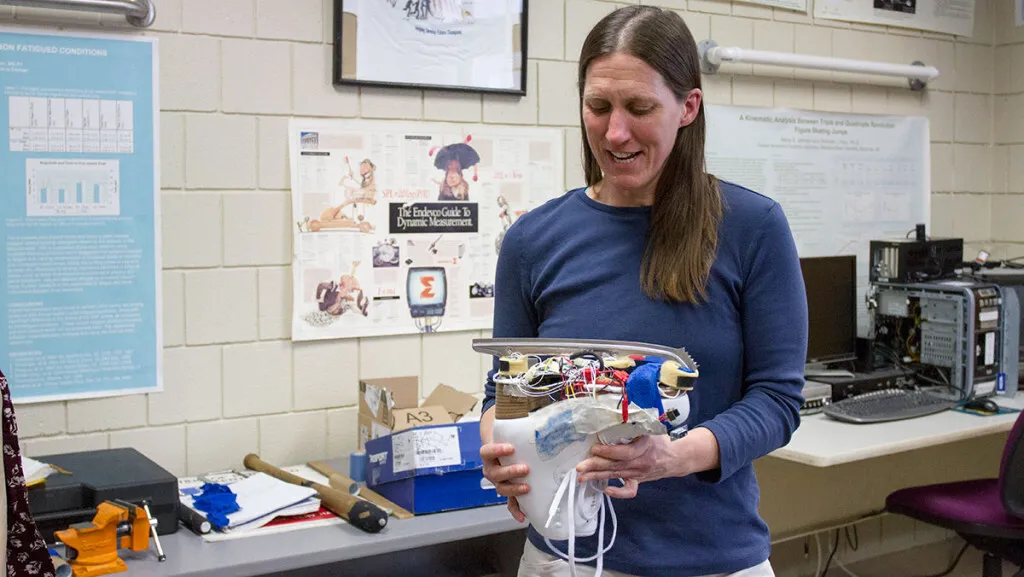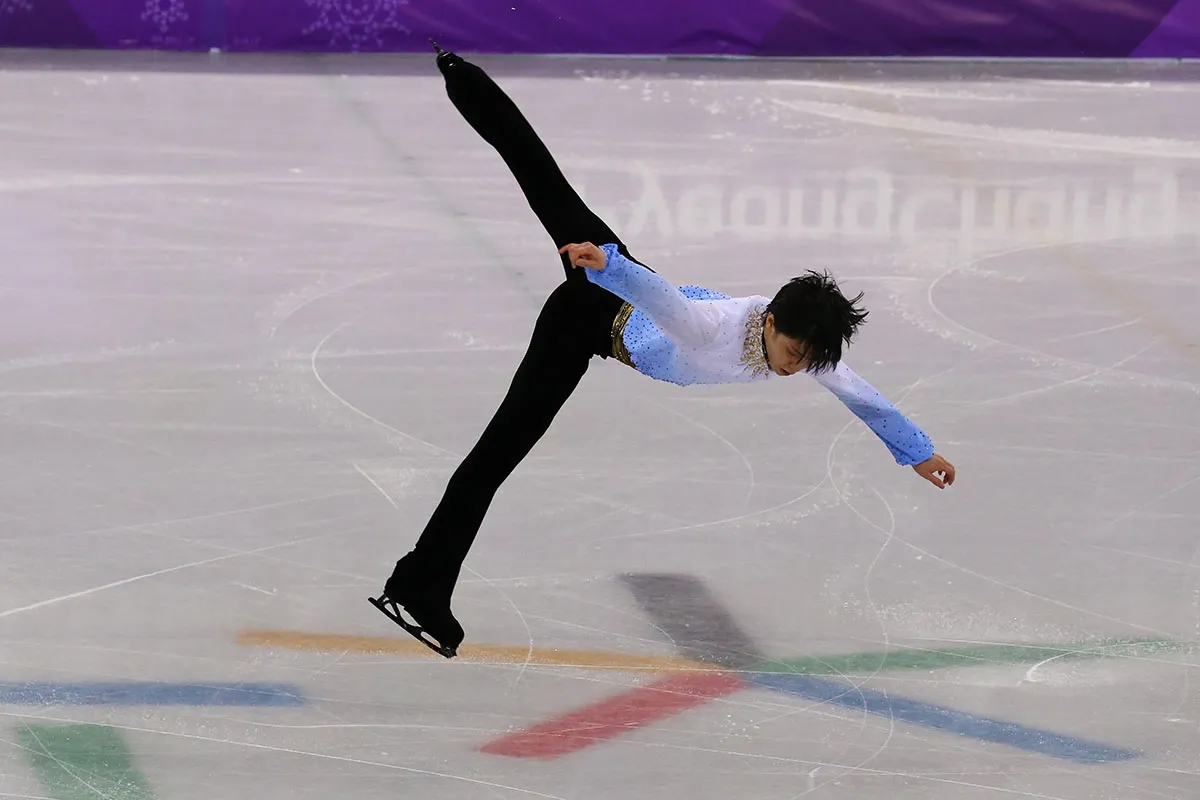Nabbing countless headlines, hours of airtime, and even documentary series, figure skating has long been a fan favorite at the Winter Olympics — and for good reason. But while some of us are in awe of the effortlessly executed jumps, twists, and lifts that seem to defy the laws of gravity, scientists like Deborah King see something else: a physics experiment on ice.
With the 2022 Beijing Games in full swing, Deborah King, professor and graduate chair of exercise science and athletic training at Ithaca College, will have her eyes glued to the television on Wednesday, February 9 at 8:30 p.m. That’s when the men’s free skate gold medal event is scheduled to take place. And it’s when Japan’s Yuzuru Hanyu is expected to attempt to land the first quadruple axel in Olympic history.
“Skaters jump up, and twist, but if they aren’t completely backwards when they land, the jump gets downgraded,” King said. “And it’s hard to have enough time in the air to rotate all the way around when doing a quad axel. If [Hanyu] lands it, that would be big news, and really cool to see.”
Editor's note: Hanyu attempted to land a quadruple axel in the finals of the men’s free skate competition, but he was unsuccessful.

